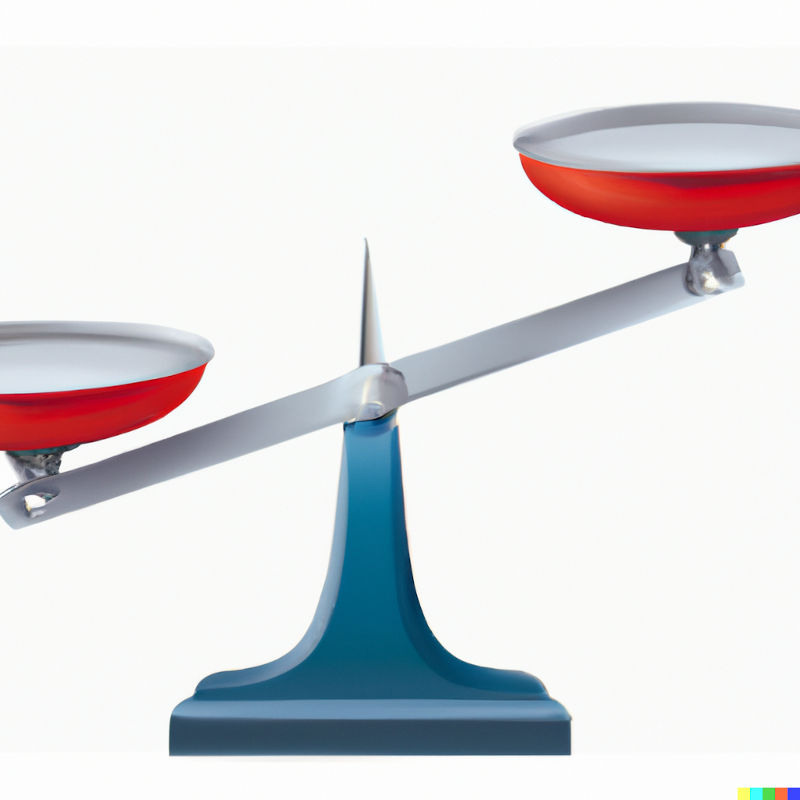If you’ve ever felt like you’re constantly busy, but not necessarily productive, or that you’re spending a lot of time on tasks that don’t yield significant results, then the Pareto Principle might be the solution you’re looking for. Also known as the 80/20 rule, the Pareto Principle is a simple yet powerful concept that can help you prioritize your efforts and maximize your productivity. In this blog post, we’ll explore what the Pareto Principle is, how it works, and how you can apply it to your life to achieve better results.
What is the Pareto Principle?
The Pareto Principle is a concept that was first introduced by Italian economist Vilfredo Pareto in the late 19th century. Pareto observed that approximately 80% of the land in Italy was owned by 20% of the population. This observation led him to formulate the principle that 80% of effects come from 20% of causes, which has since been known as the Pareto Principle or the 80/20 rule.
Over time, the Pareto Principle has been applied to various fields, including business, economics, and personal productivity, and has been found to hold true in many different contexts. The basic idea is that a small percentage of inputs or efforts often yield a disproportionately large percentage of outputs or results.
How does the Pareto Principle work?
The Pareto Principle suggests that in many situations, approximately 80% of your results come from 20% of your efforts. This means that a small portion of your tasks, activities, or projects tend to have a significant impact on your overall outcomes. Conversely, the remaining 80% of your tasks or efforts may only contribute to a small percentage of your results.
To put it simply, the Pareto Principle highlights the imbalance between inputs and outputs and suggests that by focusing on the most important and impactful tasks, you can achieve better results with less effort. By identifying and prioritizing the tasks that fall within the critical 20%, you can optimize your time and resources for maximum productivity.
Applying the Pareto Principle
The Pareto Principle can be a powerful tool to help you improve your productivity and achieve better results in various aspects of your life. Here are some practical ways you can apply the Pareto Principle to your daily routines:
- Identify the most impactful tasks: Take a look at your to-do list or your projects and identify the tasks that are likely to have the biggest impact on your goals. These tasks are typically the ones that contribute to the majority of your results, so prioritize them and make sure they get your attention first.
- Delegate or eliminate non-essential tasks: Not all tasks are created equal, and some may not be worth your time or effort. Evaluate your tasks and determine if they can be delegated to others or eliminated altogether. By reducing or eliminating low-impact tasks, you can free up time and resources for more meaningful work.
- Focus on your strengths: Just as not all tasks are equally important, not all require your unique skills or expertise. Identify your strengths and focus on tasks that leverage them. Delegate or outsource tasks that are not within your strengths to others who can do them more efficiently. This way, you can maximize your impact and productivity in areas where you excel.
- Practice the 80/20 mindset: Adopting the 80/20 mindset means constantly evaluating and prioritizing tasks based on their potential impact. Continuously assess your tasks and activities to determine if they align with your goals and if they are likely to yield significant results. This mindset encourages you to be selective and intentional with your efforts, allowing you to optimize your productivity.
- Review and adjust regularly: The Pareto Principle is not a one-time fix, but a continuous process. Regularly review and adjust your tasks and activities to ensure that you are still focusing on the most impactful ones. As priorities change and new opportunities arise, make sure to reassess and reallocate your efforts accordingly.
- Measure and analyze results: Keep track of your results and measure the outcomes of your tasks and activities. This will help you identify which tasks are truly yielding the best results and which ones may require adjustments or improvements. By analyzing your results, you can further optimize your efforts and ensure you get the most out of your tasks.
- Be mindful of time management: Time is a precious resource, and applying the Pareto Principle can help you manage it more effectively. By prioritizing tasks that align with the 80/20 rule, you can ensure that you are spending your time on activities that have the most significant impact on your goals. Avoid time-wasting activities that do not contribute to your desired outcomes.
- Avoid perfectionism: Perfectionism can be a productivity killer. Often, striving for perfection in all tasks can be time-consuming and may not yield proportionate results. Embrace the Pareto Principle by focusing on the critical few tasks that make the most difference, rather than getting bogged down by unnecessary details or perfectionism in less impactful tasks.
In conclusion, the Pareto Principle can be a game-changer when it comes to improving your productivity and results. By identifying and prioritizing the tasks that contribute to the majority of your outcomes, you can optimize your efforts and achieve better results with less time and resources. Remember to regularly review, measure, and adjust your tasks based on their impact, and be mindful of your time management. Embrace the 80/20 mindset and apply the Pareto Principle in your daily routines, and you’ll be on your way to increased productivity and success.
Cover pic generated on DALL-E 2.



